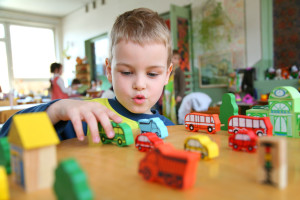by admin | Dec 2, 2016 | Uncategorized
Your child is ingesting estrogen without realizing it from everyday snacks. Petroleum-based products are classified as xenoestrogens, even the refined varieties.
The snack foods that are marketed for children can have anything from artificial coloring to petroleum products… Yes, really! Petroleum is the same ingredient that is used to make oil and gas. Commonly used food dyes, such as Yellow 5, and Red 40 are made from petroleum and pose serious health problems. The Federal Food and Drug Administration (FDA) has stated that ingestion is typically under the “concern threshold.”

Health problems connected to eating foods containing petroleum can include:
- Hyperactivity in children
- Cancer (in animal studies)
- Allergic reactions
Artificial food coloring has been linked to:
- Bed-wetting
- Ear infections
- Headaches
- Hypersensitivity
- Obesity
- Asthma
- Diabetes
- Eczema
- Mood swings
- Hyperactivity
- Sleep disturbances
- Increased risky behavior
- ADD/ADHD
- Chromosomal damage
- Hives
- Heightened risk of hypoglycemia.
Taking care of our kids takes planning, mindfulness, and a lot of hard work. If your child is exhibiting any of the above symptoms please take a close look at their diet. For help with behavioral issues and support with natural alternatives, contact the Center for Family Unity now!
by admin | Nov 17, 2016 | Uncategorized
As the air turns crisp and the time changes this month, we head into the Holiday season. A time of gatherings and cheer, but also excess! The holidays of winter often bring to mind the image of a full table—and a full stomach. We gather with friends and family and feast merrily on pies and potatoes, turkey and ham and all of the fixings that many of us dearly enjoy.
There is another side to that pretty picture, however.
What if our extra consumption of calories during the winter is fueled not by good cheer and companionship, but by anxiety? And, further, what if it’s not the gathering of loved ones that we most look forward to, but the food that we can’t get out of our minds?
Also, while we may welcome gatherings with friends and family, they do bring with them extra stress and preparation. Add to the mix the anxiety caused by a sputtering economy, and many of us might find ourselves reaching for “comfort” food.
An anxiety-provoked behavior, such as overeating, is an attempt to cope with that anxiety, but as with most such behaviors, it can become a problem itself. Overeating can become a compulsion and lead to health issues such as diabetes and obesity.
This is not to say that you should reflexively turn down that second piece of pumpkin pie, but if you were dreaming of that pie for days, and if, in fact, you care more about that pie than the people around you, then you may have a problem that needs attention.

According to Overeaters Anonymous, here are a few other common markers of compulsive eating:
1. Do you eat when you’re not hungry?
2. Do you go on eating binges for no apparent reason?
3. Do you have feelings of guilt and remorse after overeating?
4. Do you look forward with pleasure and anticipation to the time when you can eat alone?
5. Is your weight affecting the way you live your life?
6. Do you resent others telling you to “use a little willpower” to stop overeating?
7. Despite evidence to the contrary, have you continued to assert that you can diet “on your own” whenever you wish?
8. Do you eat to escape from worries or trouble?
9. Does your eating behavior make you or others unhappy?
If you think that you might be overeating compulsively, it is possible to recover. Help is available through the 12-Step programs Overeaters Anonymous and Food Addicts Anonymous, as well as the staff members of The Center for Family Unity. We can help you say yes to self-care and no to anxiety provoked behavior.
With the help and support of others, you can uncover the reasons behind your compulsive eating, find other strategies for coping with anxiety and get on a food program that can sustain and, even, restore your health.
While you may still have those dreams about that second piece of pumpkin pie, you can also live a happy, healthy and fulfilling life without it.
Call today 619-884-0601
by admin | Oct 18, 2016 | Uncategorized
Does your home struggle with a hyperactive child? Let the therapists at The Center for Family Unity help you create peace in your home!
Here are 18 suggestions to help your hyperactive child become successful:
- Be consistent in rules and discipline.
- Keep your own voice quiet and slow. Anger is normal. Anger can be controlled. Anger does not mean you do not love your child.
- Try to keep your emotions cool by bracing for expected turmoil. Recognize and respond to any positive behavior, however small. If you search for good things, you will find them.
- Avoid a ceaselessly negative approach: “Stop” “Don’t” and “No” in excess can make your child feel stuck in an impossible situation.
- Separate behavior, which you may not like, from the child’s person (e.g., “I love you. I don’t love when you track mud through the house.”).
- Establish a clear routine. Construct a timetable for waking, eating, play, television, study, chores and bedtime. Follow it flexibly when he disrupts it. Slowly your structure will reassure him until he develops his own.
- Demonstrate new or difficult tasks, using action accompanied by short, clear, quiet explanations. Repeat the demonstration until learned, using audiovisual-sensory perceptions to reinforce the learning. The memory traces of a hyperactive child take longer to form. Be patient and repeat.
- Designate a separate room or a part of a room that is his special area. Avoid brilliant colors or complex patterns in decor. Simplicity, solid colors, minimal clutter and a worktable facing a blank wall away from distractions help concentration. A hyperactive child cannot filter overstimulation.

- Do one thing at a time: Give him one toy from a closed box; clear the table of everything else when coloring; turn off the radio/television when he is doing homework. Multiple stimuli prevent his concentration from focusing on his primary task.
- Give him responsibility, which is essential for growth. The task should be within his capacity, although the assignment may need much supervision. Acceptance and recognition of his efforts (even when imperfect) should not be forgotten.
- Read his pre-explosive warning signals. Quietly intervene to avoid explosions by distracting him or discussing the conflict calmly. Removal from the battle zone to the sanctuary of his room for a few minutes can help.
- Restrict playmates to one or two at a time because he is so excitable. Your home is more suitable so you can provide structure and supervision. Explain your rules to the playmate and briefly tell the other parent your reasons.
- Do not pity, tease, be frightened by or overindulge your child. He has a special condition of the nervous system that is manageable.
- Know the name and dose of his medication. Give it regularly. Watch and remember the effects to report back to your physician.
- Openly discuss with your physician any fears you have about the use of medications.
- Lock up all medications to avoid accidental misuse.
- Always supervise the taking of medication, even if it is routine over a long period of years. Responsibility remains with the parents! One day’s supply at a time can be put in a regular place and checked routinely as he becomes older and more self-reliant.
Share your successful tips with his teacher. The ways you’ve found to help your hyperactive child are as important to him as diet and insulin are to a diabetic child.
If you need more help or guidance in supporting your hyperactive child, contact us now at 619-884-0601
by admin | Aug 27, 2016 | Uncategorized
PERSIST: 1.To be repetitious, insistent, or tenacious. 2. To hold firmly steadfastly to a purpose, state, or undertaking, despite obstacles, warnings or setbacks.
PERSISTENT: 1.The act of persisting. 2. The quality of being persistent; perseverance; tenacity

EFFECTIVE TOOLS WHEN DEALING WITH PERSISTENCE IN YOUR CHILD
The first step when dealing with the power struggle is to get some space. Disconnect and take a breath so you can come up with some positive redirections. Here are eight suggestions.
- Use loving guidance: Use loving guidance
- Have an open and loving face.
- Give the child direct eye contact.
- Listen more than you talk.
- Guide the child through the process of managing their big emotions.
- Find useful ways to make your child feel powerful: for example, you could make the child the seat belt monitor or have them push and load the child grocery carts. Giving children power in some areas makes them less likely to try and exert control in other areas.
- Teach children to say no respectfully: “No mom I don’t want to do the dishes but I will be willing to clean the family room.” or “I can’t do the dishes right now because I promised my friend I would come over right after dinner but I will do them before I go to bed tonight.” Allowing them to negotiate as well as make and keep commitments will make your house a much more peaceful place.
- Give children choices: For example, “Do you want to get in the car seat by yourself or do you want mom to help you?” If the child does not comply the next choice is an action you can take, such as, “We have to leave so if you don’t want to make the choice, I can make it for you and put you in your seat.”
- Do the unexpected: This is a fun way to break the power struggle. One mom who was in a power struggle to get her teenage daughter to vacuum her room taped a note to the vacuum “feed me I eat dust” and the daughter vacuumed her room upon returning from school.
- Pick your battles: Is this really something worth struggling over or could you let go of your position? Don’t major in the minors!
- Use signals: When you’re having a recurrent power struggle with a child have them come up with a signal you can use to remind each other of your agreement. Maybe a keyword or phrase that can be used in the moment to give you both the opportunity to take a step back and remember what you previously agreed to.
- Create win-win solutions: This is NOT a compromise, it is a solution both parties are happy with and feel their wants and needs have been met. “That works well for you but I would like to win too, so how can we work it out so we both can feel like we’ve won?”
- Name and validate: More than anything, your child wants to feel seen, heard and understood. The best way to accomplish this is by recognizing and validating their feelings in the moment. When they know you understand what they are feeling, they’ll be much more likely to stop and listen to what you have to say. Here are two examples of what this can look like:
- “You look sad…” “I can tell you really want that toy right now and I know it is really hard to wait to get something.”
- “You seem angry…” “You really want to stay outside right now and play with your friends.” or “I can tell you don’t want to come inside.”
Remember to come from your heart and really empathize with the child. Try to really see the child’s dilemma and listen to what they’re saying.
If you, the parent or caregiver, are struggling with your own big emotions or need support in guiding your child, call the experts at The Center for Family Unity at 619-884-0601 TODAY.
by admin | Aug 19, 2016 | Blended Families
Does your child’s behavior change before and/or after visiting their other parent?
Children in shared custody go through a settling in time. Some may be quiet or subdued, others may be overactive and attention seeking. Allow them time to adjust. You may also find your child’s behavior changes prior to a visit; some withdraw emotionally before making the transition back to the other parent’s house. These behaviors are typical symptoms of the emotions children go through as they cope with having to say good-bye to one parent and settle into life with their other parent.
 It’s common for a child to feel insecure during their visit particularly if the family has recently formed. Insecurity can cause them to behave in a needy or clingy manner with their parent.
It’s common for a child to feel insecure during their visit particularly if the family has recently formed. Insecurity can cause them to behave in a needy or clingy manner with their parent.
Have a routine in place to smooth the transition between homes. A change over routine helps children feel secure by providing clear guidance on when, where and how things will happen; they know what to anticipate. On the other hand, lack of structure during visits can leave a child feeling awkward and uncertain because they don’t know what’s expected of them.
Give children age appropriate duties or responsibilities, not so much to help you out but to help them feel a sense of belonging and significance. Allocate time for a family activity and time for them to spend alone with their biological parent. Organize a meal together where you can discuss what you’ve done and what will happen during their next visit.
You don’t need to be rigid in your schedule but have a structure in place to avoid guilt driven ‘Disneyland parenting’.
For help with your children’s behavior or answers to questions regarding blended families please contact us at the Center for Family Unity at 619-884-0601













